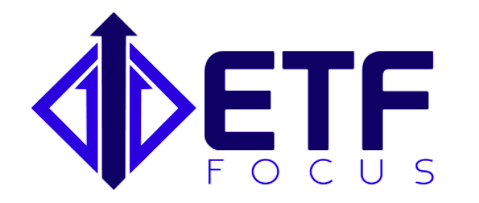The broader S&P 500 (SPY) was largely unchanged for the week but there were winners and losers if you dug down to the sector level. For the second straight week, tech was a drag on the market. The Nasdaq was down around 1%, but recovered from larger losses earlier in the week. The materials and consumer staples groups were also off around 1% on the week, the latter largely due to the Amazon’s (AMZN) buyout of Whole Foods (WFM) which I’ll touch on shortly. Industrials and utilities were this week’s leaders.
The big economic news of the week was the Fed’s decision, as expected, to raise interest rates 25 basis points. A little surprising were the inflation numbers that were released just prior to the Fed announcement. The CPI core inflation rate dropped down to 1.7%, its lowest level in two years. The Fed futures markets responding by dropping the odds of another rate hike before the end of the year from around 50% to 37%. The FOMC seems to be slightly more optimistic looking at the latest Fed Dot Plot. According to that survey of 16 Fed governors, four see no further hikes in 2017, eight forecast one more hike and four see two more hikes this year. Also of note was the Fed’s plan to finally begin unwinding its $4.5 trillion balance sheet.
As mentioned, the big market news of the week was Amazon’s surprising decision to buy Whole Foods in an all-cash deal. I wrote a brief article this week giving my take on the acquisition and what it means for the rest of the retail sector. The grocery industry is the one area of the market that Amazon has relatively little footprint in. The Amazon Go store in Seattle is an interesting concept but its AmazonFresh online business has gained little traction. It’ll be quite interesting to see how the king of the online channel fares in the brick-and-mortar grocery store industry.
With those things in mind, here are my four ETFs to watch in the coming days.
SPDR S&P Retail ETF (XRT)
Much of the retail sector got hammered in response to Amazon’s move into grocery. Kroger (KR), one of the largest grocery businesses, was down as much as 15% on Friday before rebounding to “just” a 9% loss. Costco (COST) was down 7%, Target was down 5%, even Walmart (WMT) was down over 4%.
While Amazon’s presence certainly won’t help these companies, it feels to me like a lot of these drops were overdone. Walmart, in particular, feels like a “buy the dip” prospect. The Retail ETF was down about 1.5% on Friday as the major retailer losses were offset somewhat by Amazon’s gain.
Others: VanEck Vectors Retail ETF (RTH), Amplify Online Retail ETF (IBUY), Consumer Staples Select Sector SPDR ETF (XLP), First Trust Nasdaq Retail ETF (FTXD)
PowerShares QQQ Trust ETF (QQQ)
Much has been made of the FAAMG stocks, the newest acronym group consisting of Facebook (FB), Amazon (AMZN), Apple (AAPL), Microsoft (MSFT) and Google (GOOG). These stocks have accounted for much of the market’s gains this year but it’s also been largely at fault for tech’s recent pullback.
QQQ’s top five holdings are all FAAMG stocks and comprise roughly 36% of the fund. From their 2017 highs, Facebook and Amazon are off 3%, Microsoft is off 4%, Google if off 5% and Apple is off nearly 9%. Given the valuation of these stocks, a bit of a pullback is healthy and shouldn’t be unexpected. Remember that many of the long-term stories here are still in place.
Others: First Trust Dow Jones Internet Index ETF (FDN), PowerShares Nasdaq Internet ETF (PNQI), iShares North American Tech ETF (IGM)
Brand Value ETF (BVAL)
The latest entry in the smart beta ETF universe comes from the Exponential ETFs group. The Brand Value ETF seeks to identify companies that have brand equity value not recognized within the stock’s share price. It does this by targeting the 50 companies with the highest brand value score, a ratio of a proprietary brand power score to market cap.
Top holdings in the fund include Best Buy (BBY), Bank of America (BAC) and Wendy’s (WEN). The fund’s focus on targeting higher quality companies with stronger brands makes sense as a longer-term strategy, but I tend to stay away from brand new funds until they gain a little traction. The expense ratio of 0.65% doesn’t help the cause either.
iShares U.S. Healthcare Providers ETF (IHF)
The overhaul of the current health care law looks like it might be creeping slightly closer to having a legitimate chance of passing as Republicans continue tweaking the content to get just enough support to push it through. Since the CBO estimates that it could cost up to 23 million Americans their health insurance and/or Medicaid coverage.
This could significantly affect healthcare providers who either a) could see a drop in customers because they’re unable to pay their bills without insurance, or b) could be forced to foot the cost of patients who can’t pay their bill. Watch this development closely.
Others: Vanguard Healthcare ETF (VHT), Healthcare Select Sector SPDR ETF (XLV), iShares U.S. Healthcare ETF (IYF)
Want to get the weekly ETF watchlist in your inbox every week? Simply subscribe to the site either below or at the right and you'll get it automatically along with our ETF Focus Weekly newsletter!


